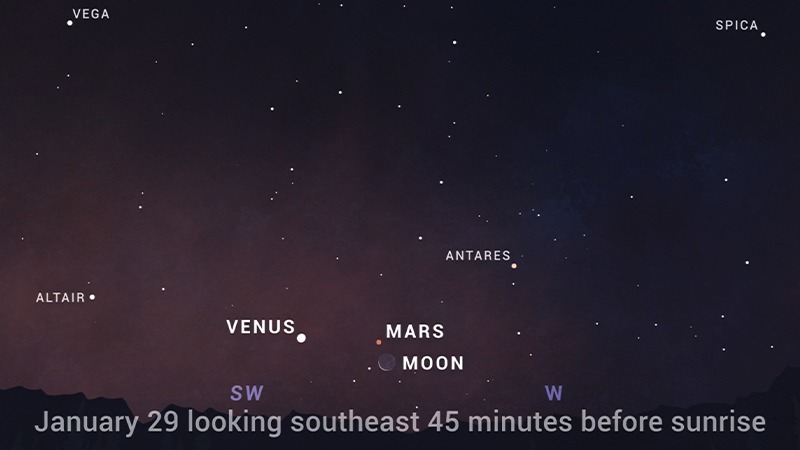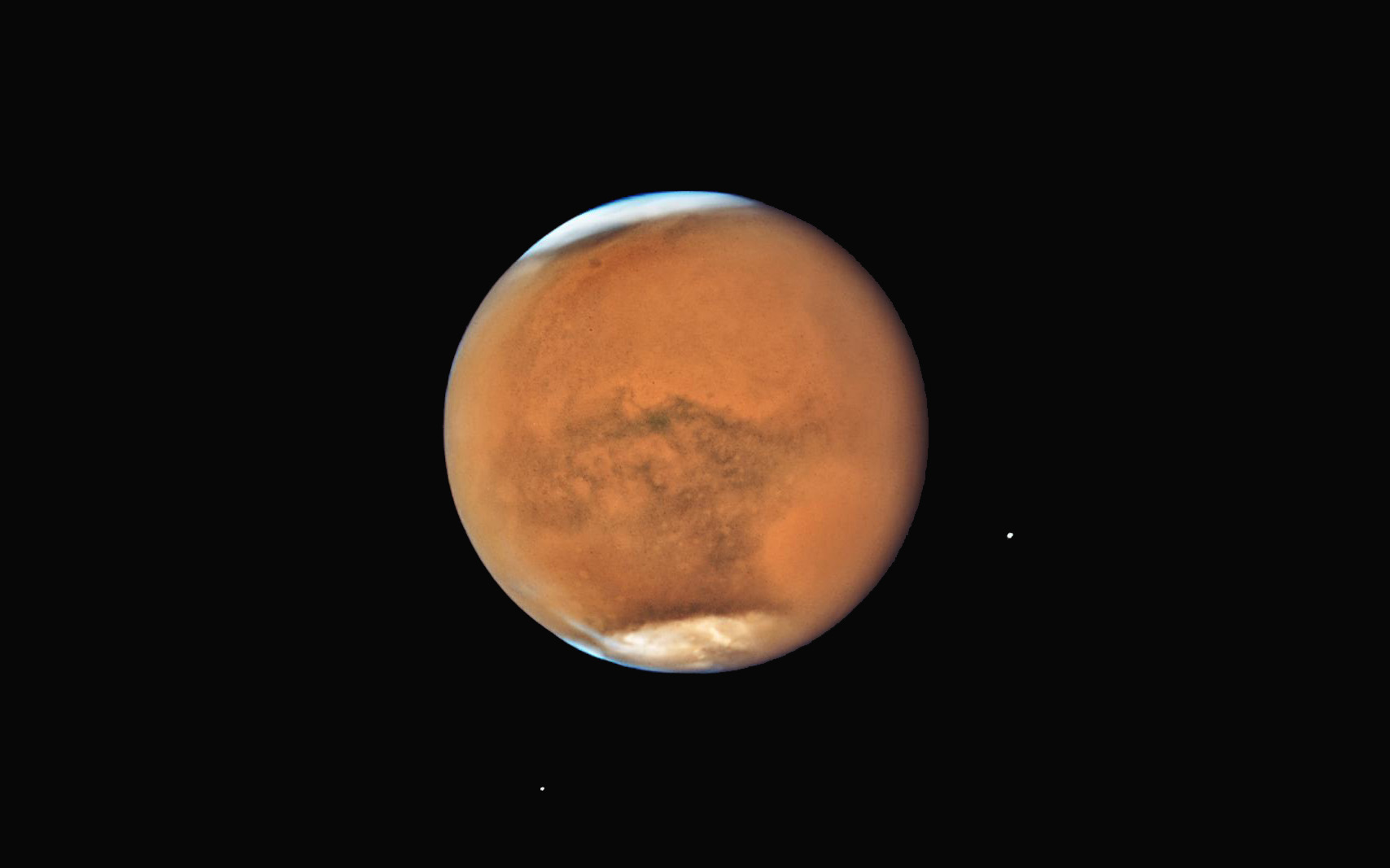See Mars shine very close to the crescent moon in the pre-dawn sky Saturday. Here's where to look.
Venus will join the scene, too!

There's a cool "close encounter" of worlds happening right against the horizon at sunrise Saturday (Jan. 29).
Provided you can see low enough between buildings and trees, you can spot the moon and Mars hovering close to each other in the sky, a little over two degrees apart.
They won't be alone in this close celestial encounter in the predawn sky; just a little bit to your left will be Venus, and if you want an observing challenge (and are equipped with binoculars) you may also spot (dim) Mercury and (bright) Saturn a little further to the left.
Related: The brightest planets in the night sky: How to see them (and when)
But you'll have to act quickly to see the worlds so close together: in New York City, Mars and the moon will be visible at 5:01 a.m. EST and disappear from view in the brightening sky at 6:48 a.m. EST, according to In-The-Sky.org.
If you take a photograph of the moon, Mars or Venus let us know! You can send images and comments in to spacephotos@space.com.
Conjunctions happen in our sky thanks to the sun, moon and planets sharing a path across the sky known as the ecliptic, otherwise called the plane of our solar system. Several times a year, you get to see various worlds lining up in the sky. Sometimes they even eclipse each other, which will happen next in May during the "blood moon" lunar eclipse, as the moon passes into Earth's shadow.
Happily, most of the worlds visible in the sky should be visible with the naked eye this weekend: Mars at roughly magnitude 1.5, Venus at an incredible -4.3, and somewhat dimmer Saturn at magnitude 0.7. The moon, of course, will be quite easy to spot. For perspective, typical eyes can view up to magnitude 6.0 in dark-sky conditions.
Get the Space.com Newsletter
Breaking space news, the latest updates on rocket launches, skywatching events and more!

Make sure to go out before sunrise, at least 20 minutes earlier if you can, to let your eyes adjust to the sky. Shield yourself as best as possible from any stray lights nearby. If you must consult a star chart or your phone, use a red filter to preserve your night vision. Skywatchers in chillier regions will also need to bundle up for predawn observing.
More ambitious astronomers can bring out binoculars or a telescope to observe the conjunctions, although Mars and the moon will be too far apart to fit into a single telescope view.
If you're looking for binoculars or a telescope to see planets in the night sky, check our our guide for the best binoculars deals and the best telescope deals now. If you need equipment, consider our best cameras for astrophotography and best lenses for astrophotography to make sure you're ready for the next planet sight.
If you miss this conjunction, NASA says not to fear: more are coming soon. "Mars will continue to brighten and climb higher over the next few months, where it'll have super-close conjunctions with Saturn and Jupiter," the agency said.
Follow Elizabeth Howell on Twitter @howellspace. Follow us on Twitter @Spacedotcom or on Facebook.
Join our Space Forums to keep talking space on the latest missions, night sky and more! And if you have a news tip, correction or comment, let us know at: community@space.com.

Elizabeth Howell (she/her), Ph.D., was a staff writer in the spaceflight channel between 2022 and 2024 specializing in Canadian space news. She was contributing writer for Space.com for 10 years from 2012 to 2024. Elizabeth's reporting includes multiple exclusives with the White House, leading world coverage about a lost-and-found space tomato on the International Space Station, witnessing five human spaceflight launches on two continents, flying parabolic, working inside a spacesuit, and participating in a simulated Mars mission. Her latest book, "Why Am I Taller?" (ECW Press, 2022) is co-written with astronaut Dave Williams.
